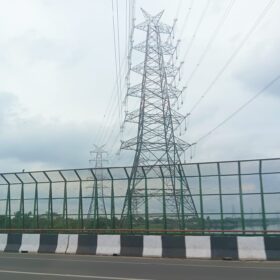Genus Power wins smart metering order worth INR 3,121.42 crore
Genus Power Infrastructures’ total order book now exceeds INR 17,000 crore (over $2 billion).
Agrivoltaic facilities with single-axis trackers have lower LCOE than those with fixed structures
New research from Belgium shows agrivoltaic facilities with trackers perform significantly better than projects with fixed structures. The scientists found projects with tracking achieved an LCOE of €0.077 ($0.082)/kWh, while facilities with fixed structures were found to have an LCOE of €0.10/kWh.
Multi-day energy storage increases grid capacity by factor of 10
Form Energy has released a white paper that provides further evidence that multi-day energy storage, like its iron-air technology, can substantially reduce the costs for New York to achieve its ambitious decarbonization targets.
Solar, storage, and V2G at the core of Israel’s future energy system
New research has shown that Israel has the technical potential to deploy 172.5 GW of photovoltaics, of which 132.1 GW would be from conventional installations and 40 GW from agrivoltaics. If deployed, this full potential would require energy storage with a capacity of at least 500 GWh and strong development of vehicle-to-grid technologies.
UK coal-fired power plant site to host 1,040 MW/ 2,080 MWh battery
Independent energy infrastructure developer Carlton Power has secured planning consent for a 1,040 MW/ 2,080 MWh battery energy storage system (BESS). The project is expected to strengthen the resilience of the energy system in northwestern England.
Weekend Read: It’s time to get Sirius
In a bid to avoid costly grid augmentation, Spanish electric vehicle (EV) charger supplier Wallbox has designed a multi-layered energy intelligence solution – proving that necessity is the mother of invention.
Integrating higher share of renewable energy in India’s power system
To increase the share of renewable energy, India needs to introduce demand-side measures like time-of-use tariffs, develop a well-connected national grid, deploy various energy storage options for grid balancing services, and convert its fossil-fuel-powered fleet to operate flexibly.
Green baseload hub to replace coal, gas generation in eastern Germany
German coal miner LEAG is planning a massive clean energy hub, comprising up to 14 GW of wind and solar energy generation paired with 2 GWh to 3 GWh of battery energy storage and 2 GW of green hydrogen production. Combined, these technologies are expected to create a net-zero baseload energy system.
L&T advances renewables infrastructure for world’s largest green hydrogen plant
Larsen & Toubro (L&T) is set to begin constructing the renewable energy generation, storage, and grid infrastructure for the green hydrogen production facility in Saudi Arabia, as it has made significant progress from design to procurement.
NLC seeks QCA services for 1.4 GW of solar and wind plants
NLC India Ltd is looking to engage a qualified coordinating agency (QCA) for its 1.4 GW of solar and wind power plants at various places in Tamil Nadu. The QCA will maintain the transmission of plant-level data and other required data to the state load dispatch center (SLDC), besides providing other services.














